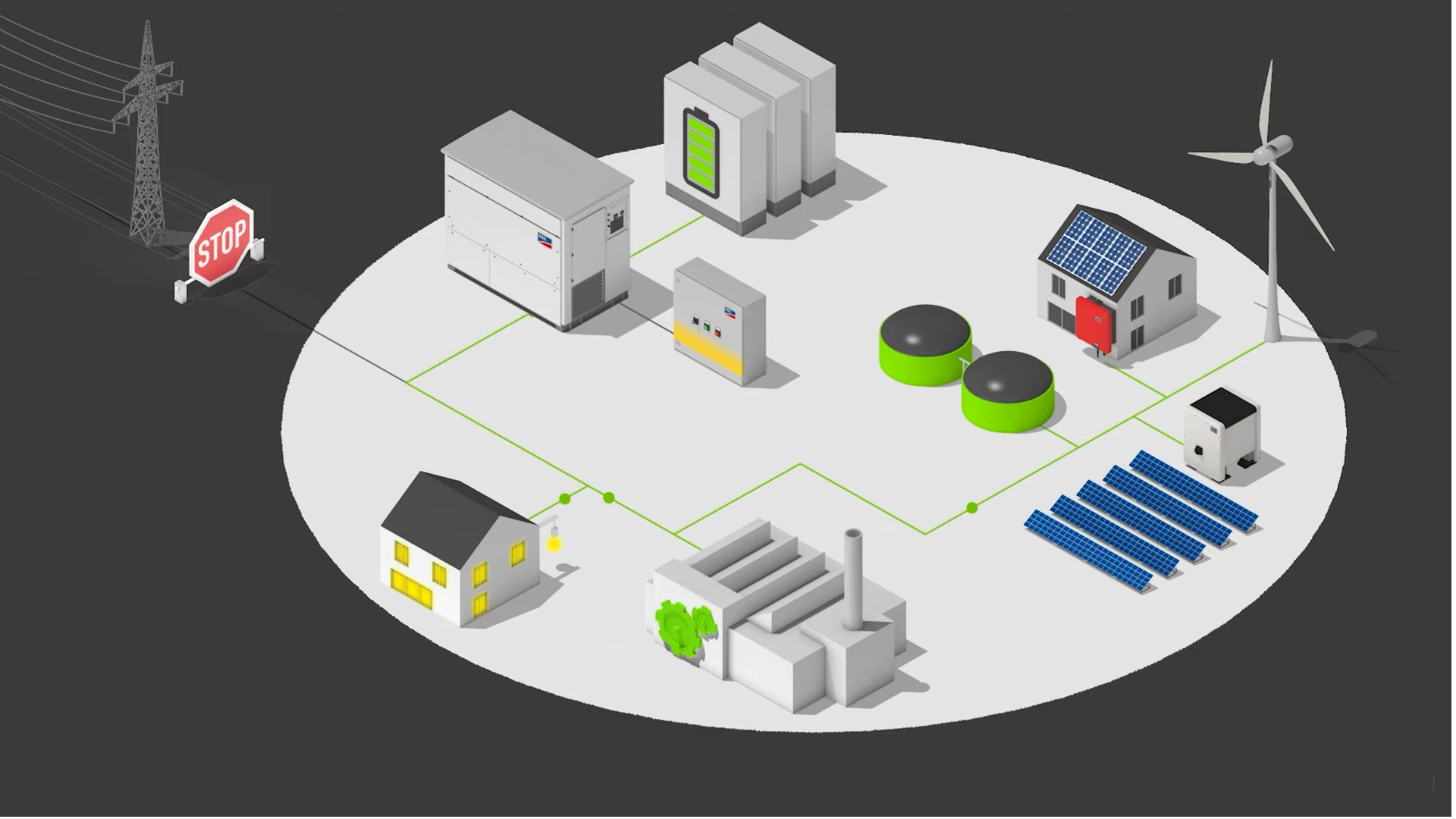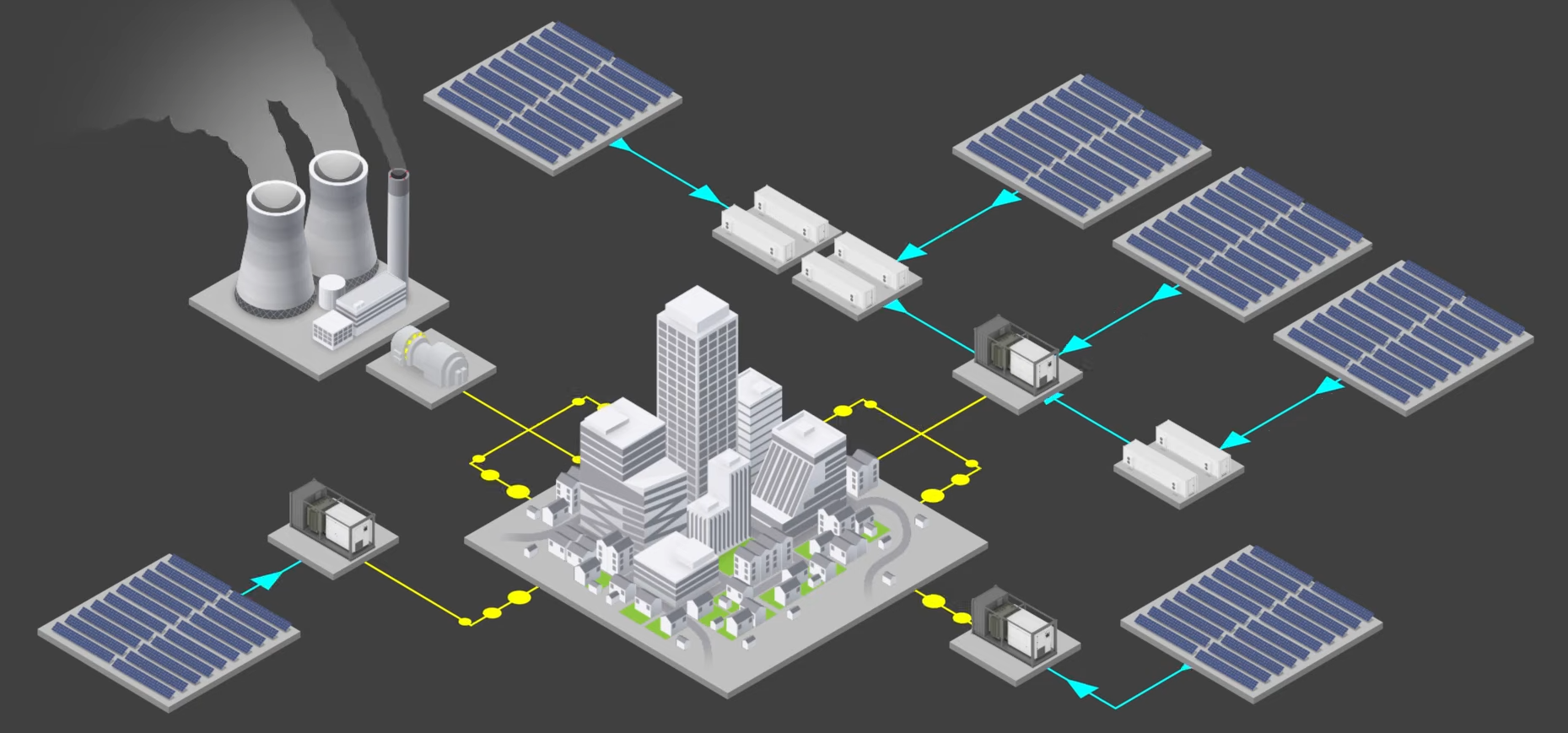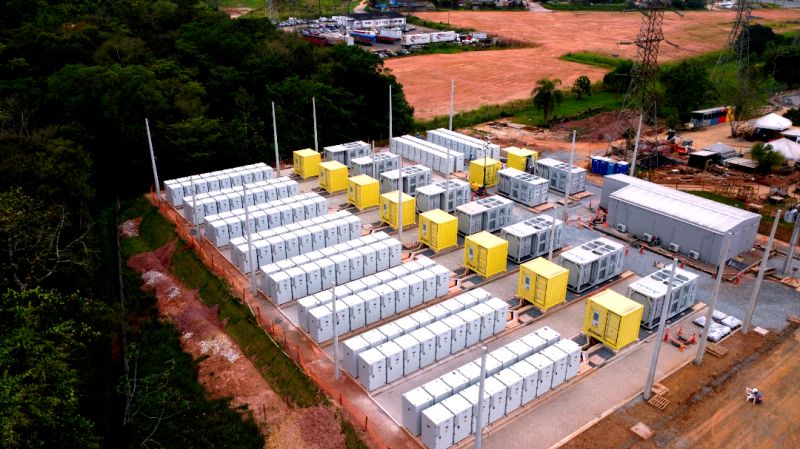Solar + Battery
Concept of Storage-as-Transmission
-
Traditional Approach: Historically, energy storage (like battery systems) has been primarily used alongside renewable energy sources (e.g., solar farms) to store excess energy generated during peak production times.
-
Innovative Approach: The new strategy involves placing energy storage systems at two key locations:
- Next to Renewable Energy Projects: Similar to traditional methods, one battery system is installed alongside renewable energy sources.
- Along the Transmission Corridor: Crucially, an additional battery system is installed at strategic points in the grid, particularly near areas of high energy demand, like urban centers.
-
Benefits: This dual-placement approach enhances grid storage capacity significantly (in the range of hundreds of megawatt-hours). It aids in better utilization of the transmission system, reduces the need for additional infrastructure, and lowers operating costs.
Example: The Netzbooster (Grid Booster) Project
- Location: Kupferzell, a major grid hub in Germany's industrial region.
- Capacity: 250 MW battery-based energy storage.
- Objective: To utilize existing transmission and distribution systems more efficiently and reduce the need for traditional grid expansion.
- Completion: Scheduled for 2025.
Market Trends and Impacts
-
Avoiding Transmission Costs: Placing storage at two interconnection points can circumvent expensive transmission costs, particularly in regions like California with high renewable resources and dense populations.
-
Monetization and Incentives:
- Investment Tax Credits: Under the U.S. Inflation Reduction Act, energy storage projects can benefit from standalone investment tax credits.
- Additional Revenue Streams: Beyond power purchase agreements, energy storage can generate revenue through other mechanisms like rate-basing.
-
Global Comparison: The U.S., outside of states like California, is seen as lagging in energy storage development compared to countries like Germany, Chile, and Lithuania. The latter countries have been more active, partly due to factors like high energy prices and the impact of events like the Russia-Ukraine War.
-
Diverse Use Cases: Energy storage can be used for multiple purposes, such as merchant power, energy arbitrage, and providing contingency support during events like California’s wildfire season.
-
New Markets in the U.S.: Regions like the Southeast are emerging markets for energy storage, where integration with utility solar projects and high population areas presents new opportunities.
-
Growth Forecasts:
- BloombergNEF and Wood Mackenzie Forecasts: Predict significant growth in energy storage capacity by 2026 (55 GW and 65 GW, respectively).
- California's Deployment Rate: CAISO (California Independent System Operator) expects to deploy 2 GW of energy storage assets per year, matching the historic rate of solar installations.
Conclusion
This approach, exemplified by projects like Netzbooster, represents a significant shift in how energy storage is integrated into the grid. It demonstrates a more sophisticated use of battery systems to enhance grid efficiency, manage energy distribution more effectively, and support the growing adoption of renewable energy sources.
Ensuring Uninterrupted Power and Operational Resilience
In today's fast-paced and technology-driven world, uninterrupted power supply is crucial for businesses, especially for those operations classified as 'critical loads'. Critical loads refer to essential systems and processes that must remain operational 24/7, such as healthcare facilities, data centers, and emergency services. Commercial storage systems play a pivotal role in ensuring these critical loads receive a constant and reliable power supply. This article explores the importance and benefits of commercial storage systems in managing critical loads.
The Significance of Uninterrupted Power for Critical Loads
Ensuring Operational Continuity:
- Reliability: For operations like hospitals and data centers, even a momentary power disruption can have serious consequences. Commercial storage systems provide a dependable power backup, ensuring continuous operation.
Safety and Compliance:
- Regulatory Requirements: Many critical load operations are subject to strict regulatory requirements regarding power reliability. Commercial storage systems help in meeting these compliance standards.
Key Advantages of Commercial Storage Systems for Critical Loads
1. Immediate Response to Power Outages:
- Commercial storage systems can detect power outages instantly and provide immediate power backup, minimizing downtime.
2. Load Management and Energy Efficiency:
- These systems can manage energy loads more efficiently, reducing the strain on the grid and lowering operational costs.
3. Integration with Renewable Energy Sources:
- Storage systems can be paired with renewable sources, like solar or wind, to create a sustainable and resilient power solution for critical loads.
4. Scalability and Customization:
- The storage systems can be scaled and customized to meet the specific needs of different critical load operations.
5. Advanced Technology and Smart Controls:
- Modern storage systems come equipped with smart technology that can predict and manage power requirements, further enhancing reliability.
Implementing Commercial Storage for Critical Loads
Assessing Power Needs:
- Businesses must conduct a thorough assessment of their power needs, considering factors like load size, duration of backup required, and criticality of operations.
Choosing the Right Technology:
- Selecting the right type of storage system (e.g., lithium-ion batteries, flow batteries) is crucial for efficiency and longevity.
Partnering with Experts:
- Collaboration with energy storage experts ensures a system that is well-designed, reliable, and compliant with regulatory standards.
For businesses and services with critical loads, commercial storage systems are not just a choice but a necessity. These systems provide the backbone for uninterrupted operations, ensuring that essential services remain online, efficient, and compliant with regulatory standards. As the reliance on technology and the need for sustainable energy solutions grow, the role of commercial storage systems in supporting critical loads becomes increasingly vital. By investing in these systems, businesses can safeguard their operations against power disruptions, ensuring continuity and reliability in a world where every second counts.
A VPP is generally considered a connected aggregation of DER technologies – not only solar and battery storage, but increasingly grid-interactive efficient appliances and buildings, electric vehicle charging, and thermal energy storage. Aggregators, utilities, or grid operators, under terms agreed upon with participants, can remotely and automatically adjust DERs in this aggregation to provide clean energy, reliability, and grid services while maintaining customer comfort and productivity. Through a combination of software and hardware, VPPs not only open the grid to a whole new utility-scale, behind-the-meter supply, but also coordinate disparate DERs into holistic, demand-flexible resources. Operators gain the flexibility to better reduce peak demand and, as a result, defer investment in additional capacity and infrastructure to serve a peak load that is expected to increase as we electrify the nation’s economy. VPP participants can receive compensation for services rendered and all the benefits that come with them.


These questions aren’t just theoretical; VPPs are already offering a straightforward solution for maximizing the value of renewable supply and energy storage proliferating at the grid edge. While novel implementations like the vehicle-to-grid case I highlight are still in early stages, utilities and aggregators together are already pioneering expanded functionalities for distributed solar/storage VPPs at scale:
- Since 2019, utilities in Illinois have offered commercial, industrial, and community solar customers rebates at $250/kW for solar installations in exchange for the installation of a smart inverter, allowing the assets to be used for grid services like voltage and frequency regulation in addition to generating power for the owner;
- In Maryland, Delmarva Power is currently piloting PJM’s first residential VPP with Sunverge, which will provide 0.5 MW/1.5 MWh of distribution-level peak shaving capability to Delmarva Power, provide customers with resilience and backup power, and demonstrate how VPPs can participate in PJM’s wholesale frequency regulation markets heading into PJM’s implementation of FERC Order 2222;
- And in Hawaii, where there is no wholesale market, VPPs are advancing to maximize value for customers and the grid. Swell Energy’s 80MW solar and storage residential VPP is in the early stages of aggregating DERs across three islands to deliver multiple grid services, including capacity build, capacity reduction and fast frequency response. The VPP is managed by Swell's Distributed Energy Resource Management System, GridAmp, and integrated with Hawaiian Electric's Demand Response Management System. The VPP can save participants thousands of dollars and enables customer control over home energy systems in the event of an outage.
These projects are differentiated by the degree to which dispatch is automated, how data is exchanged with the wholesale market and/or utility, and the grid services each is providing. In the world of VPPs, software is driving this breadth of innovation, though not without a deep appreciation for the underlying DERs. While not an exhaustive survey of American VPPs, these three examples show the wide range of possibilities for aggregated, behind-the-meter solar and storage in the U.S. today. They are only a piece of what’s being accomplished across the country, and a sliver of what VPPs are capable of around the world.
No matter where the future takes us, solar and storage technology will continue to be a foundational part of the strong value proposition of VPPs. If recent history is any indication, we will only grow increasingly capable of optimizing DERs to maximize penetration of renewables and defer infrastructure investment without compromising reliability.
Brazil's Landmark 30MW Lithium-Ion Battery Installation from our strategic partner: A Sustainability and Reliability Milestone
Introduction
Brazil has made a significant stride in sustainable energy and grid reliability by installing a massive lithium-ion battery system. This pioneering project aims to support more than 2 million people by providing additional power during peak consumption times and enhancing the stability of the national grid.
Project Overview
A Massive Installation
The lithium-ion batteries, covering approximately 5,000 square meters—an area half the size of a standard soccer field—boast a capacity of 30 MW. This substantial installation is poised to have a considerable impact on the nation's energy infrastructure and environmental footprint.
Environmental Impact
Over the course of two years, the battery system is projected to prevent the emission of 1,194 tons of CO2 by replacing diesel generators. This equates to a significant environmental benefit, aligning with global efforts to reduce carbon emissions and combat climate change.
Peak Performance
The batteries will play a critical role during peak energy consumption times, providing up to two hours of backup power. This ensures a continuous supply of electricity, avoiding potential disruptions caused by surges in demand and delivering enhanced service reliability.
Investment and Revenue
The project represents a major investment by ANEEL (Brazil's National Electric Energy Agency) amounting to over $27 million with an expected Annual Allowed Revenue (RAP) of about $5 million, reflecting June 2021 figures based on ANEEL's Authorizing Resolution.
A Pioneering Grid Operator
ISA CTEEP, the company operating the battery system, is a leader in electricity transmission. It operates across 17 Brazilian states and is responsible for transmitting approximately 30% of Brazil’s electricity—crucially, including 92% of the power used in the economic hub of São Paulo.
Conclusion
The 30MW lithium-ion battery installation is a landmark achievement for Brazil, demonstrating a strong commitment to sustainable energy practices and technological innovation in electricity transmission. By significantly reducing carbon emissions and enhancing grid reliability, this project not only supports the present energy demands but also paves the way for a greener, more resilient future for Brazil's power network. ISA CTEEP's role in this venture underscores its position as a vital player in the nation's energy sector, supporting millions of Brazilians with essential energy needs.
https://youtu.be/co9uRCqWjSk?si=FT_4PUEDPQEpvEKM



 The energy landscape is becoming increasingly complex with the integration of renewable resources, and one technology playing a pivotal role in this transition is the Battery Energy Storage System (BESS). The schematic provided outlines a sophisticated BESS setup, an integral component in modern energy systems for enhancing efficiency, reliability, and sustainability.
The energy landscape is becoming increasingly complex with the integration of renewable resources, and one technology playing a pivotal role in this transition is the Battery Energy Storage System (BESS). The schematic provided outlines a sophisticated BESS setup, an integral component in modern energy systems for enhancing efficiency, reliability, and sustainability.